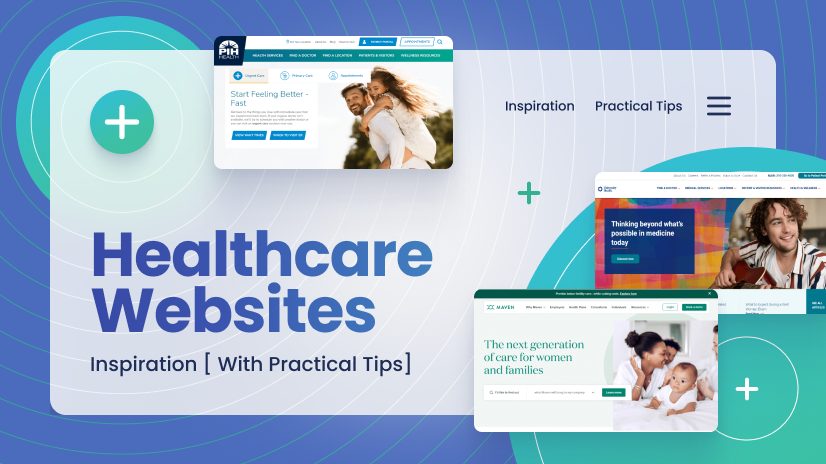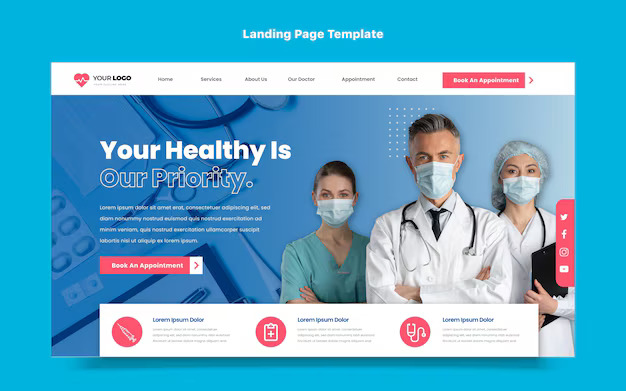
Introduction
In today’s digital a professional and user-friendly medical website design is no longer optional — it’s a necessity. Patients now rely on online research before booking an appointment with a doctor or visiting a clinic. Your website is your first impression, your virtual clinic. It reflects your credibility, professionalism, and dedication to patient care.
This blog explores the importance of quality medical website design, what elements it must include, and how it impacts your reputation and patient acquisition. If you’re a healthcare professional or run a clinic, this guide will help you understand the strategic value behind investing in an expert-level medical website design.
The Critical Role of Medical Website Design in Healthcare
Healthcare is a sensitive field where trust, privacy, and accessibility matter the most. Unlike eCommerce or entertainment websites, medical website design must be created with empathy, ethics, and efficiency in mind. Patients visiting your site may be anxious or in distress. The last thing they need is a confusing or slow website.
An effective medical website design builds trust. It reassures visitors that they are dealing with professionals who care about user experience, confidentiality, and modern communication standards.
Key Elements of an Effective Medical Website Design
A successful medical website design combines function and form. Let’s break down the essential elements that should be included:
1. Mobile Responsiveness
More than 70% of users now access websites via mobile devices. Your medical website design must be mobile-friendly. From appointment forms to contact buttons, everything must work flawlessly on smartphones and tablets.
2. Clean and Calm Visual Design
Healthcare is already stressful. A calm and minimalist visual layout with soothing color tones (like white, blue, or green) can positively impact a visitor’s emotional state. Avoid flashy animations or aggressive popups.
3. Easy Navigation
Patients are often looking for specific information like services offered, doctor bios, contact details, and insurance info. A medical website design must include a clear navigation menu with no clutter.
4. Online Appointment Scheduling
This is a must. If your medical website doesn’t allow patients to book online, you’re already behind. Include a simple, user-friendly booking system with confirmation emails.
5. Patient Testimonials and Reviews
Reviews establish authoritativeness and trust. Display patient testimonials in a genuine and professional format. It boosts your brand’s credibility.
6. HIPAA Compliance
A legally compliant medical website design respects patient privacy and data protection. Always include secure forms, encryption, and a clear privacy policy.

The SEO Angle: Ranking Your Medical Website
Search Engine Optimization (SEO) plays a huge role in how easily potential patients can find you online. A properly optimized medical website design improves your Google rankings and drives more organic traffic. Here’s how:
- On-Page SEO: Use your focus keyword “medical website design” strategically in headings, content, meta tags, and URLs.
- Local SEO: Include your clinic’s location, Google Maps integration, and local keywords.
- Technical SEO: Fast loading speed, mobile responsiveness, and structured data help improve your crawlability and ranking.
Pro Tip: Avoid keyword stuffing. Even though “medical website design” is important, it should appear naturally in context to maintain content quality and reader engagement.
Common Mistakes in Medical Website Design
Many medical professionals fall into traps that ruin user experience and damage their online reputation. Here are some pitfalls to avoid:
- Outdated design: Old layouts and Flash-based elements are a huge turn-off.
- No clear CTAs (Call-To-Actions): Don’t make your users hunt for buttons or forms.
- Hard-to-read fonts: A professional medical website should prioritize clarity.
- Lack of credibility indicators: Not showing licenses, awards, or affiliations can make patients question your authority.
Future-Proofing Your Medical Website
Technology is evolving, and your medical website design must evolve with it. Consider integrating:
- Telemedicine features for virtual consultations.
- Chatbots for basic queries and appointment support.
- Multilingual options to serve a diverse audience.
- Accessibility tools (screen readers, font size adjusters) for users with disabilities.
An adaptive website ensures you stay competitive and relevant in the changing healthcare landscape.
Final Thoughts: Your Website Is Your Digital Clinic
A high-quality medical website design is more than just a pretty face—it’s a strategic tool to grow your practice, serve patients better, and stand out from competitors. By focusing on patient experience, SEO, legal compliance,standards, you create a digital presence that mirrors your real-world care standards.
If you’re a healthcare provider, don’t ignore your website’s potential. Whether you’re launching a new clinic or revamping your current platform, remember: your website is your digital clinic, and it should reflect your professionalism, empathy, and medical excellence.
